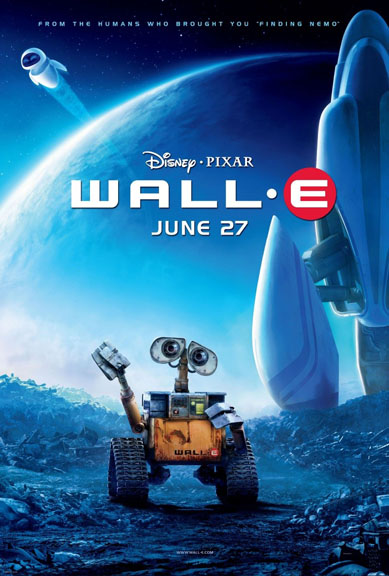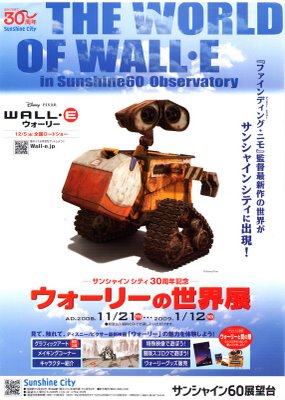
| I find it ironic, really. Andrew Stanton illustrated robots with human emotions and human desires in order to help children and adults maintain and reinforce their potentially diminishing human awareness in a technological age. "As technology continues to advance and challenge in every department of human endeavor, awareness is the only lasting tool we can develop to maintain humanity; wisdom the only continuing craft that can save us from genius" (Charbeneau 76). Charbeneau was referring to the influence of robotics in music, how creativity, regardless of the technology, still relies on humanity in order to prevail. Andrew Stanton's Wall-e does not refute this statement, rather it reinforces it through a visual medium, through film and computer animation and semiotics and robots who simulate the human condition. |  |
Pixar Animated Studios and Disney released Andrew Stanton's Wall-e in June of 2008. Wall-e proceeded to sweep the summer box office before winning Best Animated Film at the 2008 Academy Awards, a surprising and unprecedented accomplishment for children's film. Wall-e is unique, like Disney's Fantasia(1940) was unique, except that it tells one story where Fantasia was simply a celebration of sights and sounds. I say unique because Wall-e does not rely on dialogue to drive its character development or its story line. Rather, Stanton and his team facilitated a number of visual techniques and methodologies in order to engage a multi-national, multi-generational audience. Roger Ebert was impressed and surprised by the obvious success of Wall-e, saying, "That it works largely without spoken dialogue is all the more astonishing; it can easily cross language barriers, which is all the better, considering that it tells a planetary story" (Ebert). The purpose here is to explore the visual in Wall-e, focusing on how a love story adventure about robots catches human interest and conveys volumes of meaning without words.
| Watching Wall-e | Engendering Robots | Bibliography | Picture Gallery |
 |
 |
 |
 |